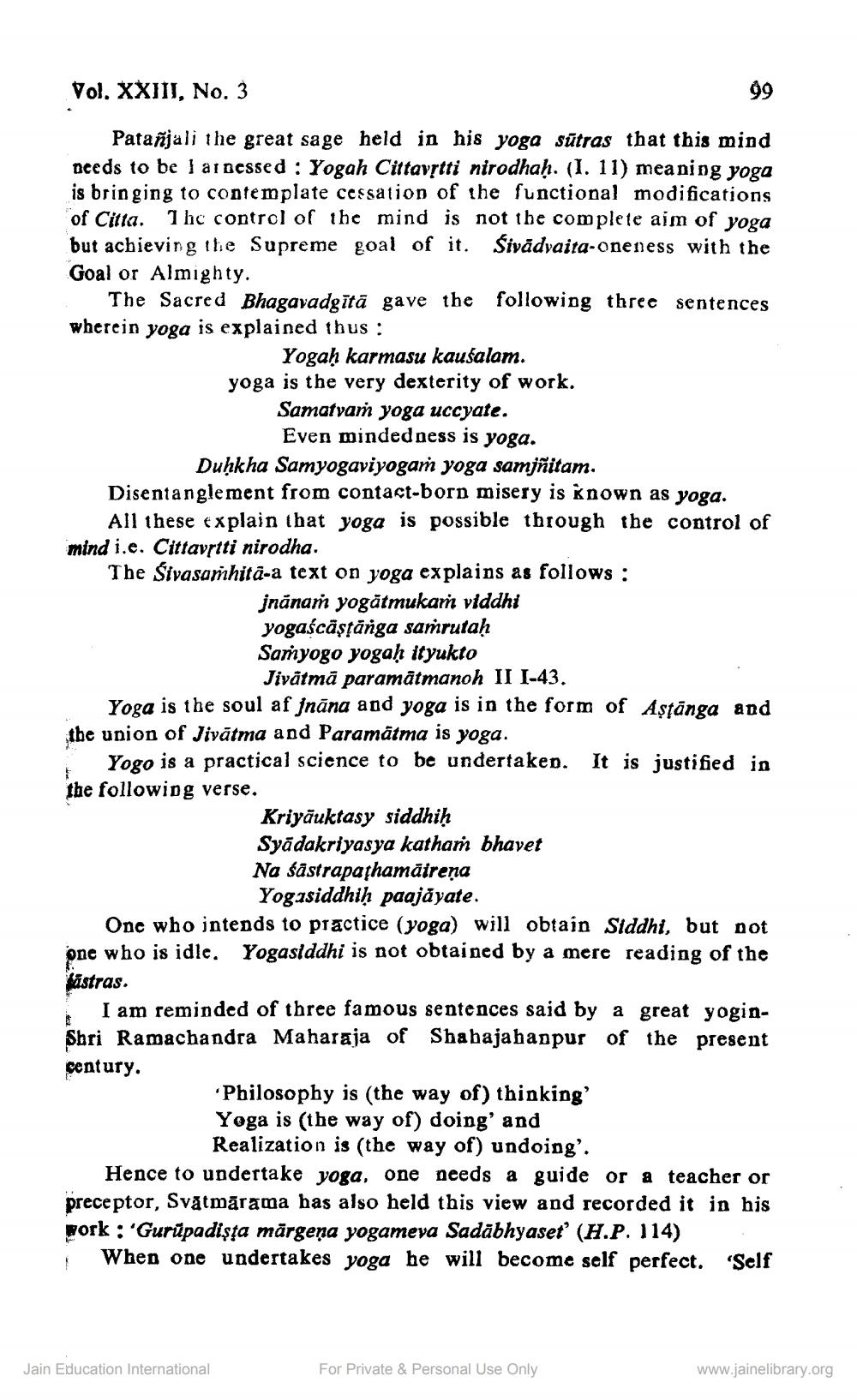________________
Vol. XXIII, No. 3
99
Patanjali the great sage held in his yoga sūtras that this mind needs to be 1 arnessed: Yogah Cittavṛtti nirodhaḥ. (I. 11) meaning yoga is bringing to contemplate cessation of the functional modifications of Citta. The control of the mind is not the complete aim of yoga but achieving the Supreme goal of it. Sivädvaita-oneness with the
Goal or Almighty.
The Sacred Bhagavadgītā gave the following three sentences wherein yoga is explained thus:
Yogaḥ karmasu kausalam. yoga is the very dexterity of work. Samatvam yoga uccyate. Even mindedness is yoga.
Duḥkha Samyogaviyogaṁ yoga samjñitam.
Disentanglement from contact-born misery is known as yoga.
All these explain that yoga is possible through the control of mind i.e. Cittavṛtti nirodha.
The Sivasamhita-a text on yoga explains as follows:
jnānam yogātmukaṁ viddhi yogaścästänga samrutaḥ
Samyogo yogaḥ ityukto
Jivātmā paramātmanoh II I-43.
Yoga is the soul af fnāna and yoga is in the form of Aṣṭānga and the union of Jivātma and Paramātma is yoga.
Yogo is a practical science to be undertaken.
It is justified in
Ste
the following verse.
Kriyauktasy siddhiḥ
Syadakriyasya katham bhavet
Na sastrapathamāireṇa Yogasiddhiḥ paajāyate.
One who intends to practice (yoga) will obtain Siddhi, but not one who is idle. Yogasiddhi is not obtained by a mere reading of the ästras.
I am reminded of three famous sentences said by a great yoginShri Ramachandra Maharaja of Shahajahanpur of the present century.
Hence to undertake yoga, one needs a guide or a teacher or preceptor, Svātmārama has also held this view and recorded it in his work: 'Gurupadiṣṭa mārgeṇa yogameva Sadābhyaset' (H.P. 114)
When one undertakes yoga he will become self perfect. 'Self
F
'Philosophy is (the way of) thinking'
Yoga is (the way of) doing' and
Realization is (the way of) undoing'.
Jain Education International
For Private & Personal Use Only
www.jainelibrary.org




